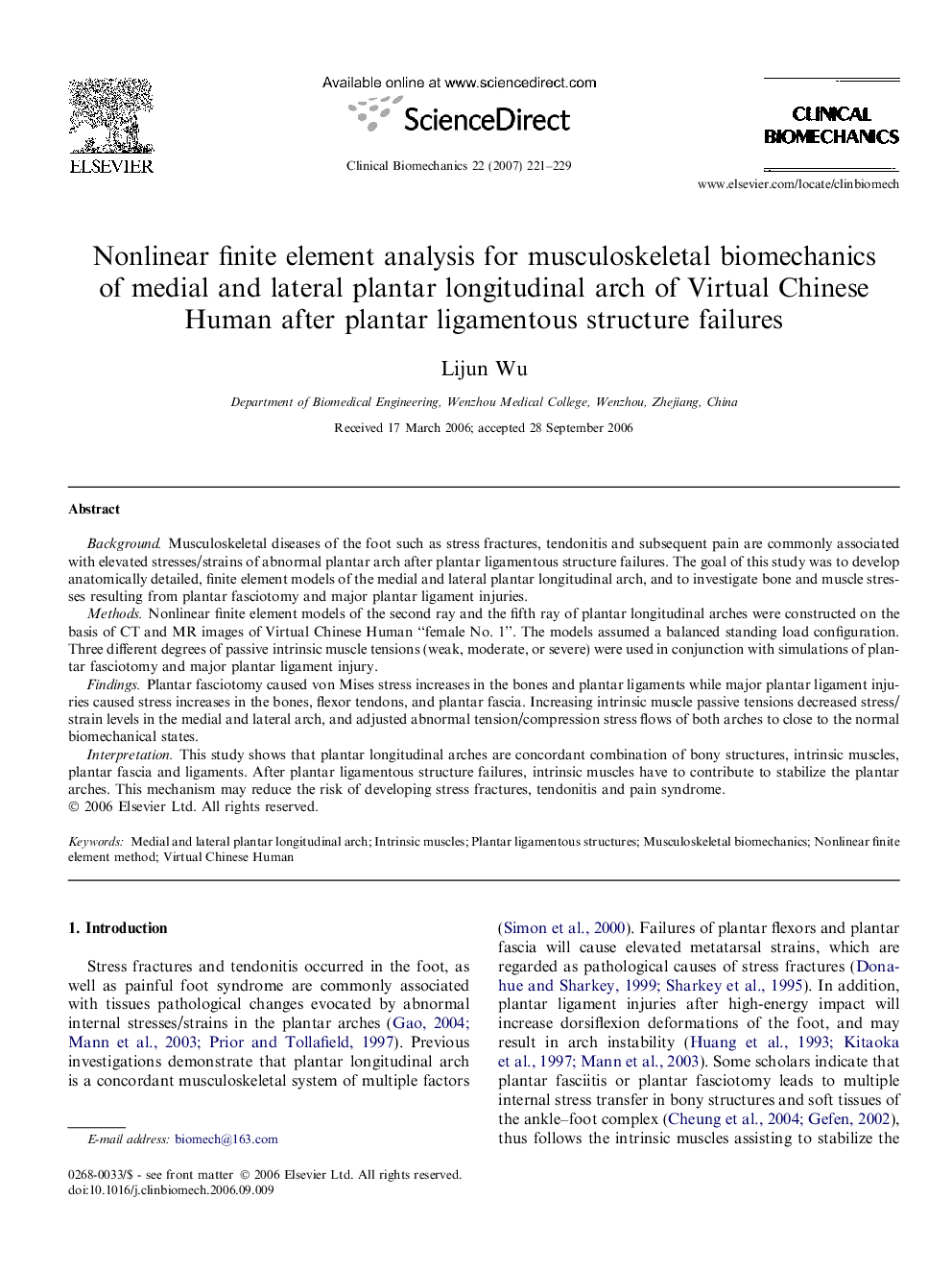| Article ID | Journal | Published Year | Pages | File Type |
|---|---|---|---|---|
| 4051320 | Clinical Biomechanics | 2007 | 9 Pages |
BackgroundMusculoskeletal diseases of the foot such as stress fractures, tendonitis and subsequent pain are commonly associated with elevated stresses/strains of abnormal plantar arch after plantar ligamentous structure failures. The goal of this study was to develop anatomically detailed, finite element models of the medial and lateral plantar longitudinal arch, and to investigate bone and muscle stresses resulting from plantar fasciotomy and major plantar ligament injuries.MethodsNonlinear finite element models of the second ray and the fifth ray of plantar longitudinal arches were constructed on the basis of CT and MR images of Virtual Chinese Human “female No. 1”. The models assumed a balanced standing load configuration. Three different degrees of passive intrinsic muscle tensions (weak, moderate, or severe) were used in conjunction with simulations of plantar fasciotomy and major plantar ligament injury.FindingsPlantar fasciotomy caused von Mises stress increases in the bones and plantar ligaments while major plantar ligament injuries caused stress increases in the bones, flexor tendons, and plantar fascia. Increasing intrinsic muscle passive tensions decreased stress/strain levels in the medial and lateral arch, and adjusted abnormal tension/compression stress flows of both arches to close to the normal biomechanical states.InterpretationThis study shows that plantar longitudinal arches are concordant combination of bony structures, intrinsic muscles, plantar fascia and ligaments. After plantar ligamentous structure failures, intrinsic muscles have to contribute to stabilize the plantar arches. This mechanism may reduce the risk of developing stress fractures, tendonitis and pain syndrome.
